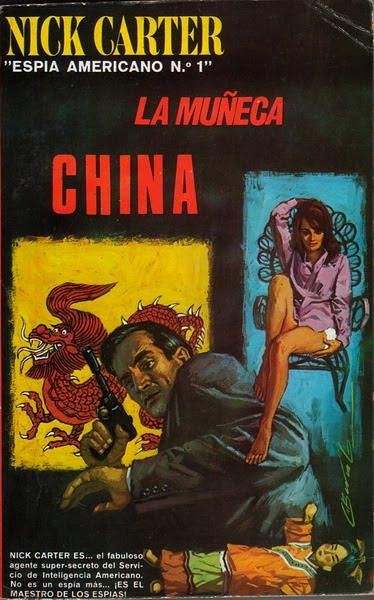Tiki Central / Locating Tiki / Muñeca China, Madrid, Spain (restaurant)
Post #506160 by Zeta on Fri, Jan 22, 2010 11:20 AM
|
Z
Zeta
Posted
posted
on
Fri, Jan 22, 2010 11:20 AM
JAJA! Mahalo Mister Naufrago! you always have something super cool to share! Maybe there's some clue hidden in this text: China doll A china doll is a doll made partially or wholly out of glossy glazed porcelain. The name comes from china being used to refer to the material porcelain.[1] Colloquially the term china doll is sometimes used to refer to any porcelain or bisque doll, but more specifically it describes only antique glazed dolls. Antique china dolls were predominantly produced in Germany, approximately between 1830 and 1930, with the peak in popularity between roughly 1840 and 1880, when bisque dolls took over.[2][3] Companies like Beck and Gotschalck, Alt, Kestner and Hertwig made china dolls in large quantities, counting in the millions. A few earlier china dolls were made in France.[2] A typical German china doll has a head made of glazed white untinted porcelain, with molded hair and painted eyes. The glaze gives the doll a characteristic glossy appearance. The head is attached to a body made of cloth or leather, sometimes with arms and legs made of porcelain. Some china dolls, like the Frozen Charlotte dolls, were made entirely out of porcelain, with head and body made in one piece without any articulation. They range in size from 5 cm (2 inches) in height up to 75 cm (30 inches) with the smallest dolls often made without articulation.[2] China dolls were typically designed to depict grown women and were dressed in fashionable clothes. They often had distinctive contemporary hairstyles, like sausage curls, ribbons or headbands, all molded in porcelain. Beginning in 1880, china doll heads were often sold without a body, for the customer to fashion a body and clothing to their liking. Rare and elaborately decorated antique china dolls can be worth several thousand dollars on the collectors market.[2][3] Parian dolls are similar to china dolls in that their heads are made of untinted white porcelain and they use cloth bodies, but they are unglazed with a matte finish. They were mainly made in Dresden in Germany, from around 1850 to 1870.[4]
|

